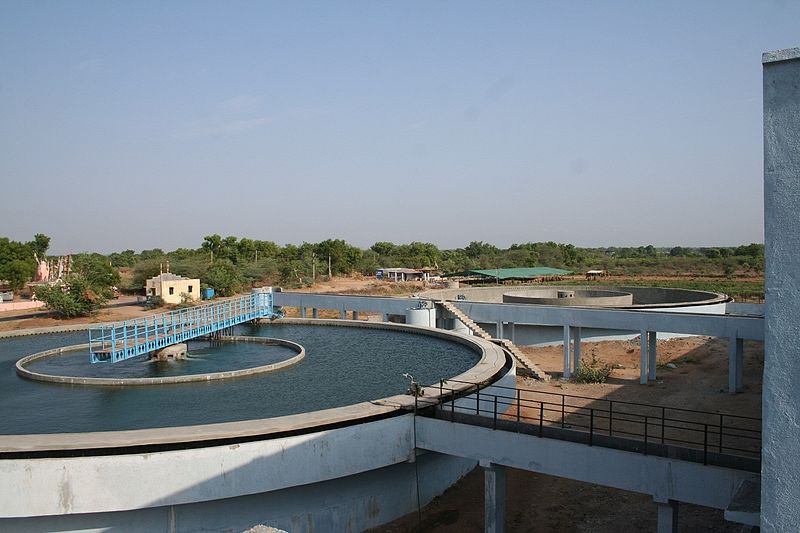Distilled vs Purified Water: What’s the Difference?
-

- Last updated:

Today, many methods of water conditioning exist to help improve the quality of the water we use. Designed to remove contaminants, these processes treat the water in different ways. You’ve certainly heard of purified water and distilled water, but do you actually know the difference? In this article, we’re going to discuss the differences and similarities, as well as the benefits and drawbacks of each. Then, we will discuss how you can distill or purify water for yourself, and which method is the best choice for what situations.
What is Purified Water?

Purified water is one of the purest types of water available, as the name implies. Water that contains less than 10 parts per million (PPM) is classified as purified water. However, getting water to that state takes more than just running it through a basic filtration system. Many people make the mistake of thinking filtered water and purified water are the same thing, but they’re not. Some filters are capable of purifying water, but not all. Beyond this, several techniques exist for purifying water. Some of the most popular include reverse osmosis and distillation.
What is Distilled Water?
Distilled water is a type of purified water. Distillation is the process of boiling water to convert it into steam, which is captured and contained. All contaminants are left behind when the water converts into steam. Once the steam cools, pure distilled water remains, completely free of all substances. Unfortunately, all of the essential minerals are also stripped from the water. Distilled water is completely bare, measuring just one part per million of dissolved solids. This lack of minerals also means that distilled water tends to taste very flat.
Some compounds found in water such as VOCs (volatile organic compounds), have boiling points lower than water. When boiling the water to distill it, these contaminants will often boil off first. These must be filtered out to avoid collecting them with clean water when the steam cools. Luckily, most distilling machines will have separate filters designed just for this purpose.
Which is Healthier?
Many individuals are looking to distilled or purified water as a way of improving their health. This begs the question, which type of water is healthier? The truth is that both of these waters strip the essential minerals from your water. However, distilled water has been further stripped than purified water, so it’s even more devoid of helpful minerals. This doesn’t necessarily mean that you’ll become deficient by drinking it. As long as you’re consuming plenty of mineral-rich vegetables, you should still have adequate intake. That said, anytime you remove a source of minerals from your diet, it could cause negative consequences. To combat this, certain filters exist that will add essential minerals back into your water. This is good for more than just your health though. These minerals will also improve the taste of your water as well.
How Do You Purify Water?
There are several methods of water purification, including distillation. Another common type of water purification is reverse osmosis. This is done with a reverse osmosis (RO) system that is usually made up of several different filters and RO membranes. These often include a filter that will add minerals back into the water at the final stage of the process, so that your water will taste great and still provide the essential minerals you need. Under-sink RO systems are quite popular, and they’re an easy way to get purified water in your home. They don’t require any electricity to run, and they’re easy enough to install that most homeowners can handle it themselves.
How Do You Distill Water?
Distilling water is a more complicated process than simply purifying it. To distill water, you’re going to need a countertop water distiller. Once you add water to the boiling chamber, a heating element will heat the water to a boil. Steam from the boiling water will rise, making its way through a vent and into the condenser above. All the bacteria, microorganisms, sediments, and more will be left behind when the water turns into steam.
Once in the condenser, a fan will begin to cool the steam until it turns back into water. As water droplets start to form from the cooling steam, they will pass through a carbon filter that will remove any remaining contaminants such as VOCs. After passing through the carbon postfilter, the water droplets will be collected as pure, distilled water. Producing a single gallon of distilled water with one of these machines is going to take between four and six hours. Don’t forget about how much electricity you’ll be using during that time!
Final Thoughts
When you’re searching for the purest water you can find, both purified and distilled water fit the bill, but they’re not the same thing. Purified water must contain less than 10 parts per million of dissolved solids. It can be created through several processes, such as reverse osmosis and distillation. Distilled water is created by collecting steam from boiling water. The water leaves behind the contaminants when boiled, and once cooled, the steam returns to its liquid state as pure, distilled water. Distilled water contains only one part per million of dissolved solids, making it one of the purest forms of purified water. Keep in mind that it will likely taste flat since it’s devoid of all minerals, including the ones essential for health.
Contents



